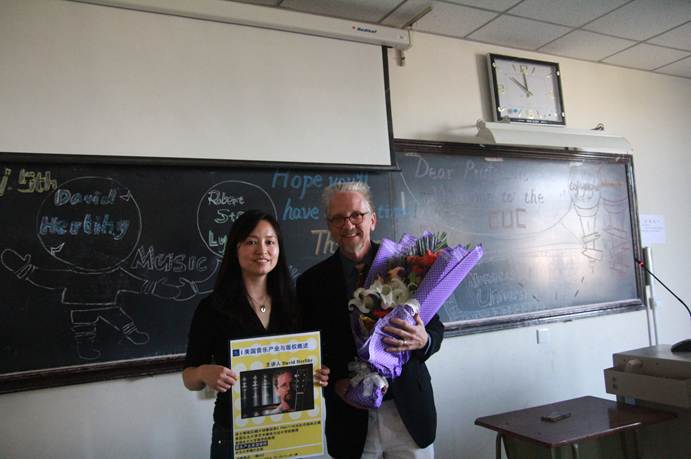Industry information
David Herlihy professor spoke splendidly about American copyright law
Source: 音乐与录音艺术学院 Time:2014-11-06 ClickTimes:0
On the morning of November 5, Professor David Herlihy from Northeastern University conducted a wonderful lecture on copyright law in the US entertainment industry at Room 402, and the lecture focused on the two types of music copyright in the music industry. Zhang Fengyan, teacher at the Music and Recording Arts School of Communication University of China, presided over the lecture.

First of all, Professor David Herlihy introduced the basic concepts of copyright law in the United States, the existence purpose of copyright law, the nature of copyright, the type of work to be protected, the time limit that the exclusive rights can be maintained, the concept of public works and the concept of public works Meaning and so on. After a basic understanding of US copyright law, the lecture moved to the main section - Music Copyright.
Herlihy introduced to the music copyright there are two: 1 songwriting copyright; 2 music recording copyright. After several revisions, the two main copyright owners in the United States today have the following six exclusive rights: 1 Mechanical reproduction rights; 2 Adaptation of works; 3 Open distribution rights; 4 Public performance rights; 5 Public display rights; 6 Video recording The right of public performance of the product is obtained through digital audio transmission. For the first copyright of music copyright - Copyright of songwriting - Have the above five rights; The second copyright - Music recording copyright - Have all the above rights, based on the sixth right to replace the lyrics Have a fourth right.
As for the music copyright of songwriters, Prof. Herlihy leads the four main types of songwriting copyright licenses: mechanical reproduction license, public performance license, simultaneous video license and songwrite license. When introducing several specific licenses, Prof. Herlihy elaborated on the statutory tax rates for both mechanical reproduction and public performance licenses, as well as the relationship between the music copyright holder and the licensee involved in the licensing of the video and songwriting licenses Negotiation between.
Professor Herlihy stressed that until 1995, the United States Congress issued a digital performance right of audiovisual products, the right to perform public performances of music recording rights has been truly protected. However, its public performance The profit of the right can and can only be obtained through the transmission of digital music. Such as music streaming Pandora play Elvis Presley, Elvis record company can get the corresponding public performance royalties.
While emphasizing the difference between the two music copyright, Herlihy also explained the correlation between them. In response to this lecture, students put forward the dilemma confronting China's music copyright under the current situation so that the entire lecture will be elevated from a theoretical point of view to a practical level.

